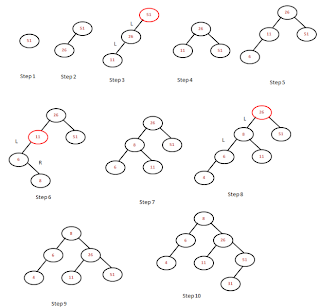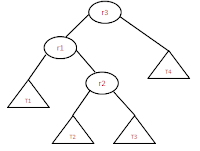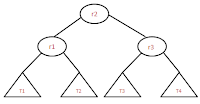Lets constrcut the AVL tree with numbers 51, 26, 11, 6, 8, 4, 31, 21, 9, 16. AVL tree is a balanced Binary search tree. So to construct AVL tree, we need to follow below steps
51, 26, 11, 6, 8, 4, 31, 21, 9, 16.
- insert the new element in such a way that if the element is less than the current node go left and if the element is greater than go right.
- Check for the balance at each node after insertion (diff between left subtree and right subtree should be atmost one)
51, 26, 11, 6, 8, 4, 31, 21, 9, 16.
- In step1 the tree is empty , so 51 is the first node, in step2 26 is inserted as a left child to the root node 51 and the tree is balanced.
- In step3 11 is added as a left child to the node 26, becaus of this root node 51 is un-balanced, as it is shown in the image as red circle. We need to do the left left rotation which is a single rotation.
- After the rotation, tree is balanced as shown in step4.
- in step5 we are inserting 6 into the tree and which is as a left child to the node value 11.
- in step6 we are inserting 8 into the tree and which is as a right child to the node value 6, because of this tree is un-balanced at node value 11 which is marked as red circle in the image.
- for balancing the node we need to do right-left rotation which is a double rotation.
- After the rotation, the tree is balanced and it is like as shown in step7.
- In step8 we are inserting 4 into the tree and which is as a left child to node value 6. Becaus of this insertion, the tree is un-balanced at node value 26, and we need to do the left-left rotation as we did it earlier.
- After the rotation the tree is like shown in step9. After that we need to insert 31 into the tree and which is as a left child to the node value 51 as shown in step10. And the tree is balanced.
- In step11 we are inserted 21 into the tree whihc is as a right child to the node value 11. In step12 we inserted 9 as a left child to the node value 11. And the tree is balanced.
- in step13, becaus of inserting 16 as a left child to the node value 21, the tree is un-balanced at node value 8.
- We need to do the left right rotation which is a double rotation. And the resultant tree is as shown in step14.










